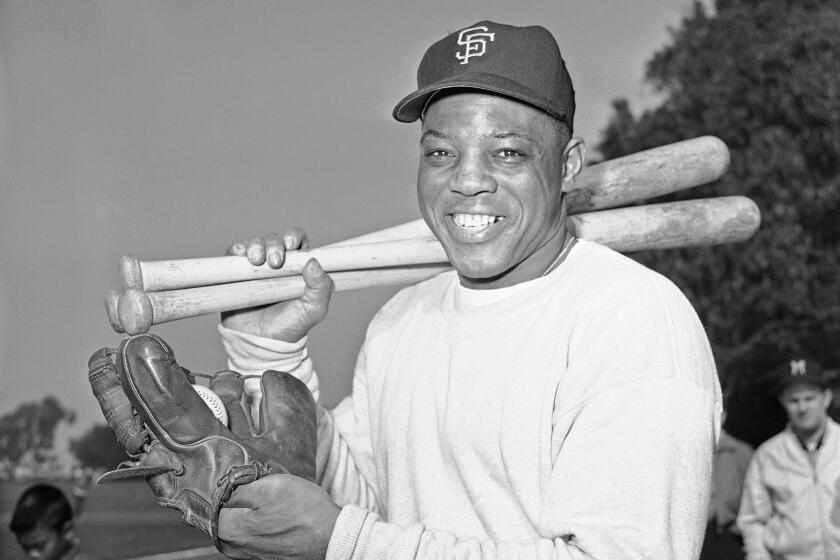TAKING THE PLUNGE : The Pool’s Still Out Back--It’s Just a Lot Smaller
More than 60% of the 3,000 pools built this year in Los Angeles County will be shallower, non-diving pools, a 50% increase from 1981, according to pool builders.
“Smaller pools are popular because the lots are smaller, and shallower because people don’t want to have the cost of heating them. People don’t heat pools anymore, they just heat their spa,” said Richard Swift, 48, of California Pools in Tarzana, one of about 160 pool companies in the San Fernando Valley.
The average pool has shrunk from the ‘50s standard of 18 by 40 feet to a new average of 16 by 32, and colored plaster is often incorporated to retain the sun’s heat. Other signs of the slimming trend are lap pools, so named because they are long and narrow for swimming laps, and swim-spas, which use water pumps to make swimming more difficult.
Matter of Economics
Jim Weir, a salesman with Anthony Pools, said: “It costs a lot of money to take care of one of those great big pools. It’s a matter of economics.”
The cost of building a smaller pool or a lap pool is often as much as a traditional one, according to builders. Operating costs are the big difference.
Most new pool owners use the heater until they get their first gas bill, said Swift, who has heard of gas bills as high as $850 a month. An average gas bill for a spa, which can be heated for $1 an hour, would be about $24 a month if it were used three times a week.
To cut down on heating bills, the modern pool designs are shallower, with a maximum depth of five feet instead of eight, because smaller amounts of water are easier to heat. Shades of blue or gray plaster also are used, which act as solar collectors to help retain the sun’s warmth.
“If you have a small but long back yard, you get a lap pool,” said Lewis Buratti, 60, of Blue Haven Pools West in New Park. “Swimming is the best exercise anyone can get. . . . The question is: How much of a pool do you need? How wide? You need length to keep from turning around so many times, but you certainly don’t need width.” Lap pools average 10 to 12 feet in width and have found new popularity in the last two years.
Engineered Challenges
Another twist on the traditional pool is the swim-spa, which debuted in the Valley in the last year, Buratti said. He has only constructed six but expects them to become more popular.
Only 10 to 12 feet long, 10 feet wide and maybe 4 feet deep, the swim-spa has twin water pumps at one end that allow the swimmer to work against the current. The pumps have two speeds and can be turned on independently to adjust for the strengths of different swimmers.
One element of modern pool design that isn’t about economizing is the spa, which has become such a staple that almost every pool built today includes one, salespeople said.
“In the late ‘50s, one out of 20 pools were built with a spa. We built 100 pools last year between Ventura County and the Valley, and I don’t think I had four that didn’t have spas,” Buratti said.
A Trend
Other builders notice the same trend.
“Where it used to be a diving board and a ladder on every pool, now it’s a spa,” said Weir. “It began as the California life style, and now it’s just standard.”
Swift said: “I did 120 pools out of this office last year and only one did not have a spa. It’s been that way for years.” It costs about $4,000 to include a spa in new pool construction compared to about $15,000 to build a spa by itself, he said.
Another thing that’s changed over the years is price. In 1989, the average pool and spa combination costs $16,000 to $24,000.
“In the late 1950s you could buy a pool for $3,000,” said a salesman. “Today people buy a barbecue for that.”
